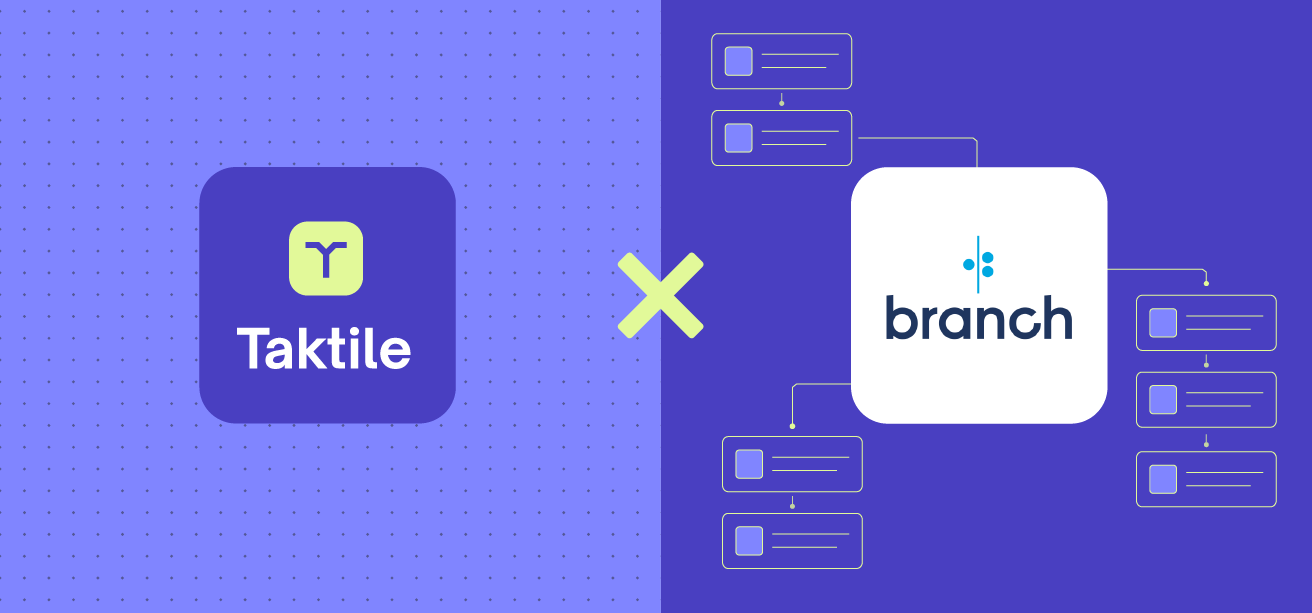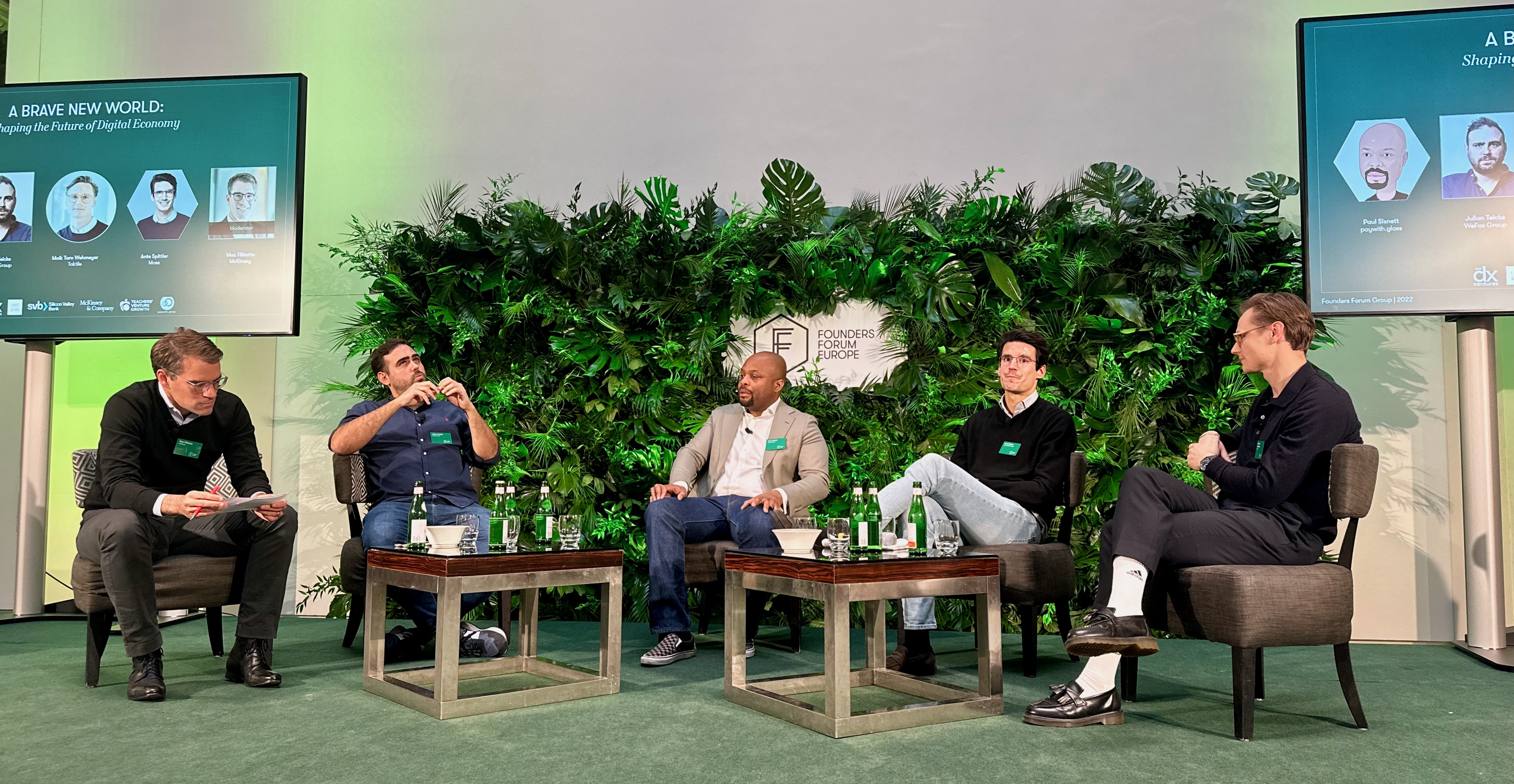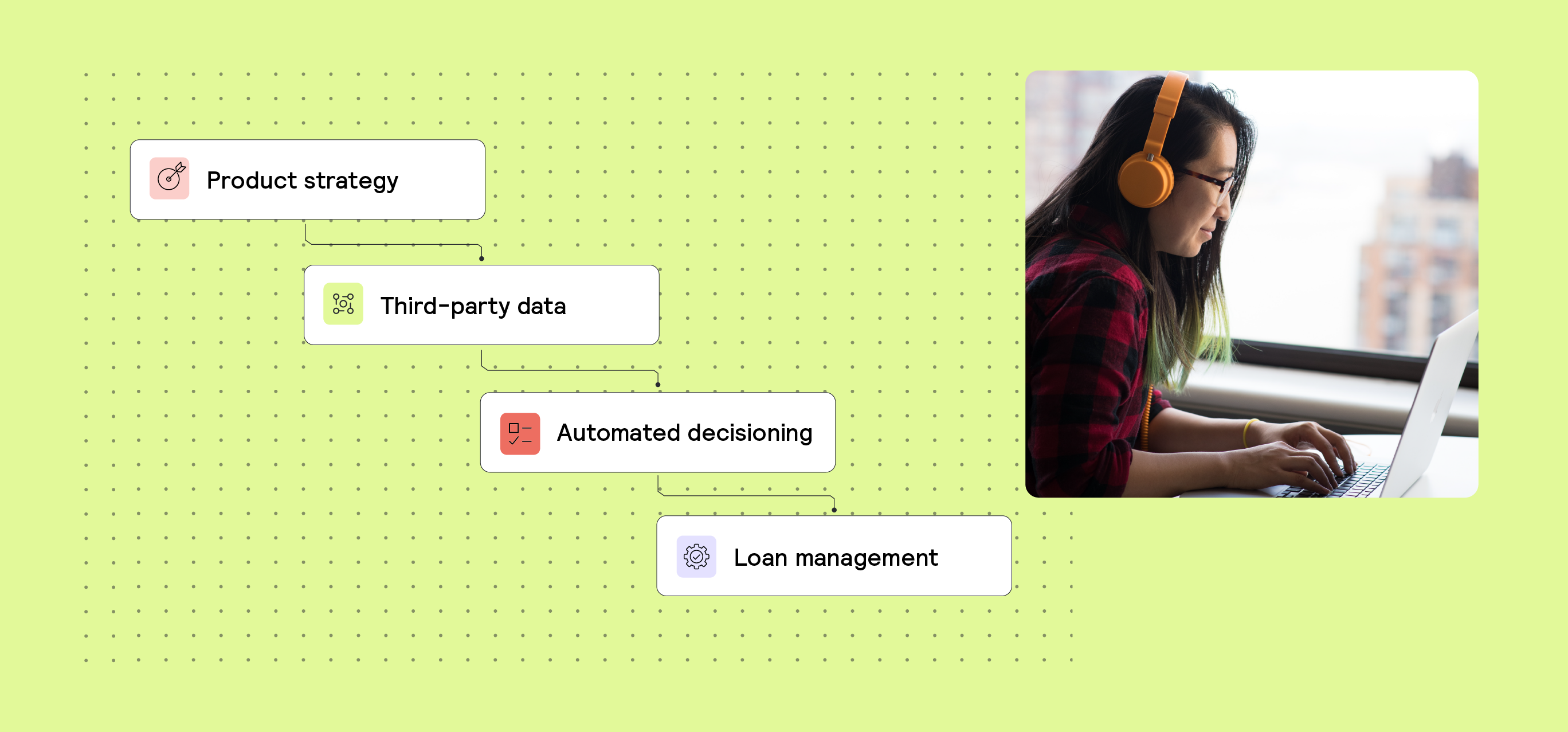B2C, Case Study, Lending 2 min read
Eliminating guesswork: How Branch uses data to iterate on models


Key takeaways
- Branch faced significant challenges maintaining multiple lending models, with manual deployment processes that were slow, error-prone, and resource-intensive.
- By adopting Taktile’s Decision Platform, Branch gained a scalable model deployment infrastructure, reducing model update time from 40 hours to 2 with minimal engineering support.
- Systematic experimentation became seamless, enabling Branch to run live A/B tests and promote higher-performing models instantly, eliminating guesswork in decision-making.
- Collaboration and visibility improved across teams, as stakeholders could easily access models, share insights, and provide feedback through the Taktile platform.
- Adopting Taktile empowered Branch to focus on innovation and growth, shifting resources away from infrastructure maintenance toward improving models, services, and profitability.
About Branch
With over 40 million app downloads and millions of customers across Africa and India, Branch International is a market-leading bank and microlender with one of the most popular finance apps in the world. Built for the emerging middle class, Branch provides access to a range of high-quality digital banking products: instant loans, money transfers, bill payments, high-yield investments, and savings—all via customers’ mobile phones.
The company receives tens of thousands of loan applications every day and has already disbursed over 25 million loans. Many of these customers are first-time applicants with little to no credit history or savings. To assess their creditworthiness, Branch applies machine learning and an algorithmic approach using data that customers share from their mobile phones, among other signals. While this tech-forward approach requires transparency and trust, it also enables a fair, secure, and convenient path for customers to build capital and save for the future.
The challenge: Regularly iterating on lending models was painful
In 2020, Branch was serving customers in four different markets and needed to maintain and update multiple lending models at the same time. At the time, a one-person team maintained their infrastructure and improved their models. They used AWS SageMaker to deploy and track the models they had built, which involved significant custom code and manual effort. While important, building and maintaining this homegrown infrastructure took time away from training better models, and as the team grew it became crucial to establish efficient and repeatable processes, along with ways to share insights about the models with colleagues.
The biggest pain point was performing model updates, a business-critical effort that Branch undertook every few months to incorporate new information into their risk strategy and retrain existing models on recent data. Launching a new model version required a tenuous dance to simultaneously bring the new one online and update other parts of the system. It was a painstaking process that required many hours of coordinated work, usually over the course of a week.
The solution: Implementing software to assist with model deployment and management
Friends in the Y Combinator ecosystem introduced Branch’s Matt Mollison, Chief Data Scientist and Machine Learning Architect, to Taktile’s founders, and the first demo was enough to get Mollison’s wheels turning about “a nice clean solution to model deployment.”
Branch decided to sign on as Taktile’s first customer because of the ease of managing multiple models simultaneously, as well as the promise of new feature expansion. “I didn’t want to spend time building infrastructure. I wanted to spend time improving the model and improving our business,” explained Mollison. The rest is history.
Two years later, Taktile is powering hundreds of thousands of decisions per day, and Branch has 16–20 production models on Taktile, including some in experiments to identify which model is performing best for a given use case. While the live model is scoring most of Branch’s live traffic, a portion is routed to test models to evaluate their performance in systematic A/B tests.
Once a test model demonstrates that it is outperforming the existing live model, it can be easily promoted with the click of a button. This agility has enabled Branch to continuously evaluate models and identify better ones more quickly. “Being able to quickly see a signal and make a data-driven decision to promote a model has eliminated the guesswork,” said Anshul Agrawal, CTO. “There’s no leap of faith.”
Using Taktile has also increased visibility and collaboration at Branch. All relevant stakeholders can easily log into the Taktile Platform, which makes it possible for Mollison and the team to share the models and reports with anyone at Branch and easily get feedback from other teams.
The impact: New focus on models, service, and bottom line
Working with Taktile instead of building and maintaining an in-house solution has freed up resources and empowered Branch to focus on what’s important: their models, their services, and their bottom line.
“We worked through the build versus buy decision, and we probably could have come up with some processes to deal with the pain points. But building our own system would have required concerted expertise from across multiple teams, consistent investment, and bringing on two more employees just to build out software features,” said Mollison. “Taktile was such a big win over sticking with the status quo. We didn’t need to invest Branch hours on maintenance or development. We could instead focus on our models and our business.”
In addition to saving Branch resources, introducing Taktile also solved one of their core challenges: how to iterate on models more efficiently. Using Taktile, implementing a new model now takes 2 hours instead of 40 and requires only one engineer to coordinate everything. This is due to the ease of using automated pipelines, as well as the software development patterns that simplify iteration.
“This is a really critical piece of infrastructure for us,” explained Agrawal. “If nobody owned this process, it would be a disaster for the company. With Taktile in place, we can confidently take our improvements to production and focus our energy on model improvements instead of ensuring the deployment is error-free. We can focus on what matters rather than keeping the lights on.”
At the end of the day, Branch has forged a true partnership with Taktile. “Of any vendor I’ve worked with, the Taktile team is always available to work with us, get feedback, and help support—even if it’s not about their product!” says Agrawal. “At a time when everyone’s attention is turning to profitability, having a partner like this is invaluable.”






